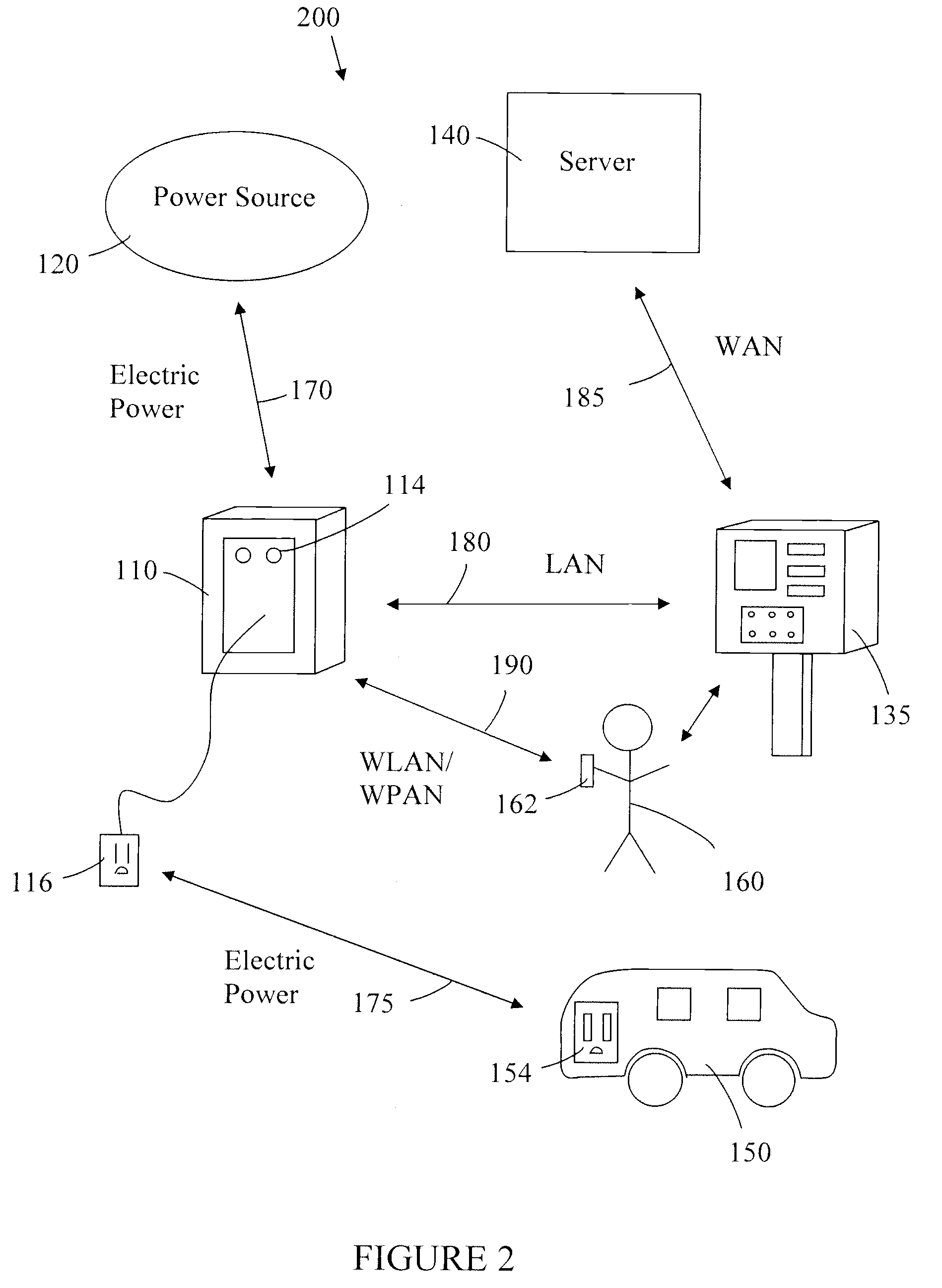Collection of electric vehicle power consumption tax
a technology for electric vehicles and power consumption, applied in the field of systems and methods for collecting electricity consumption taxes, can solve the problems of low demand, limited use of electric vehicles, and inefficient recharging of batteries that typically requires hours, and achieve accurate measurement and reporting of electricity consumed
- Summary
- Abstract
- Description
- Claims
- Application Information
AI Technical Summary
Benefits of technology
Problems solved by technology
Method used
Image
Examples
first embodiment
[0035]the network-controlled charge transfer system 100 for charging electric vehicles is shown in FIG. 1. The system 100 comprises a network-controlled charge transfer device 110, a local power source 120, a data control unit 130, and a server 140. The system 100 interfaces with an electric vehicle 150, with an electrical connector 152, and an electric vehicle operator 160, via a mobile communication device 162. The network-controlled charge transfer device 110, referred to herein as a Smartlet™, is connected to the local power source 120 by an electric power line 170, and to the electric vehicle 150 by an electrical cable 175. As shown in FIG. 1, the electric vehicle 150 may be connected to the Smartlet™110 by an electrical connector 152 provided by the electric vehicle operator 160. Alternatively, as shown in FIG. 2, the electric vehicle may be connected to the Smartlet 110 by an electrical cable 116 which is hard wired into the Smartlet™110. The flow of electrical power may be i...
second embodiment
[0043]the network controlled charge transfer system 200 for charging electric vehicles 150 is shown in FIG. 2. The system 200 comprises a network-controlled charge transfer device (Smartlet™) 110, a local power source 120, a payment station 135, and a server 140. The system 200 may be interfaced with an electric vehicle 150, with an electrical cable 116, and an electric vehicle operator 160, via a mobile communication device 162. (In alternative embodiments, the electric vehicle may be connected to the system 200 by an electrical connector 152. See FIG. 1 for an example of such a connection.) The Smartlet™110 is connected to the local power source 120 by an electric power line 170, and to the electric vehicle 150 by the electrical cable 116. The electric vehicle 150 has a vehicle receptacle 154 for connecting with electrical cable 116. In some embodiments, an electric meter may be positioned between the Smartlet™110 and the power line 170. The flow of electrical power may be in eith...
PUM
 Login to View More
Login to View More Abstract
Description
Claims
Application Information
 Login to View More
Login to View More - R&D
- Intellectual Property
- Life Sciences
- Materials
- Tech Scout
- Unparalleled Data Quality
- Higher Quality Content
- 60% Fewer Hallucinations
Browse by: Latest US Patents, China's latest patents, Technical Efficacy Thesaurus, Application Domain, Technology Topic, Popular Technical Reports.
© 2025 PatSnap. All rights reserved.Legal|Privacy policy|Modern Slavery Act Transparency Statement|Sitemap|About US| Contact US: help@patsnap.com



